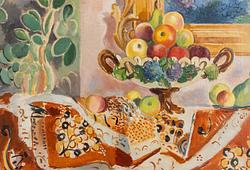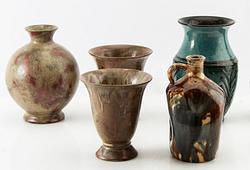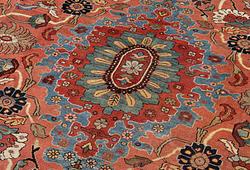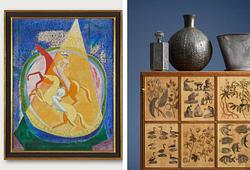Anders Zorn
Anders Zorn, "Kronprinsessan Margareta"
Etching, 1914, signed in pencil. P. 24.9 x 17.9 cm.
Not examined out of the frame.
Literature
Asplund 264, Hjert & Hjert 163.
More information
Margaret Victoria Augusta Charlotte Norah of Great Britain and Ireland (1882-1920) was Crown Princess of Sweden and Duchess of Skåne through her marriage to the Swedish Crown Prince Gustaf VI Adolf. Margareta married the future Gustaf VI Adolf of Sweden in 1905. The couple had several children. The heir apparent Gustaf Adolf was born in 1906, Sigvard in 1907, Ingrid in 1910, Bertil in 1912, and Carl Johan in 1916.
Crown Princess Margareta is described as an artistic soul and enjoyed photography and painting. Several of her paintings adorn Queen Silvia's study at the Royal Palace in Stockholm. Margareta was also very interested in garden design, and after the crown princely couple received the dilapidated Sofiero Palace with its gardens as a wedding gift, she and her husband Gustaf Adolf devoted much time and effort to restoring the garden to its former glory. The family spent their summers at Sofiero. The garden was laid out in the English style, and the children were also included in the work. Margareta published the books "Our Garden at Sofiero" in 1915 and "From the Flower Garden" a few years later, illustrated with her own drawings and photographs, which were sold to benefit "housekeeping schools with child care".
During the winter of 1919/20, when the thirty-seven-year-old Crown Princess was expecting her sixth child, she had been ill several times, which weakened her. In November 1919, she suffered a severe ear infection, which required surgery in mid-December. In March 1920, she fell ill with a severe case of chickenpox. During a visit to Leksand, she caught a severe cold that led to the formation of pus in her maxillary sinuses. On the evening of April 29, she experienced pain around her right eye and had a very high fever. The following morning, she suffered from general blood poisoning and heart failure, which quickly worsened.
At the age of thirty-eight, Margareta, who was now in her eighth month, passed away on May 1, 1920, at 14:00. The news spread quickly to Prime Minister Hjalmar Branting, who was then delivering his May Day speech at Gärdet in Stockholm.
He took a long pause and then announced that "our Crown Princess is dead." Branting quickly concluded his speech and hurried to the palace. As Crown Prince Gustaf Adolf was completely devastated, a so-called blind council was convened without the presence of the regent. It was decided to inform the Crown Princess's family in Great Britain, the county administrative boards, and foreign powers of the death. All the ministers were deeply moved, and when the council was over, Hjalmar Branting remarked, "Now the ray of sunshine in the Royal Palace of Stockholm has gone out."
Artist
Anders Zorn, born in Mora in 1860, showed artistic talent from a young age. In 1875, he traveled to Stockholm and became a student at the then Slöjdskolan (now Tekniska högskolan) in Stockholm, and shortly after, he joined the Royal Academy of Fine Arts. Initially, Zorn had aspirations of becoming a sculptor, but soon watercolor painting took over, becoming his primary medium until 1887. At the student exhibition in 1880, Zorn had his breakthrough with the watercolor painting "I sorg." The following year, he gained international acclaim as a portrait painter. His watercolor painting reached its pinnacle during this period, and his most famous work from this time is "Vårt dagliga bröd” from 1886. Shortly thereafter, Zorn transitioned to oil painting, which was met with immediate success. Zorn's reputation mainly rested on his portrait art, and he portrayed many notable figures, including presidents. For instance, he created an etching of Theodore Roosevelt. His etchings significantly contributed to his success. In the late 1880s, Zorn began working in the genre that would increasingly become his trademark: nude figures in outdoor settings. He had long been fascinated by the movement of water and the reflections of light on its surface. Now, he added the complexity of placing a model near or in the water, aiming to depict a synthesis between nature and humanity. In 1896, Zorn and his wife moved back to Sweden and settled in Zorngården in Mora. This move sparked a renewed interest in his homeland, which would be reflected in his future paintings. Among the artist's scenes from the Mora region, portraying its local customs and ancient traditions, "Midsommardansen" holds the highest value according to Zorn himself. Today, the painting can be found at the National Museum.
Read more






































